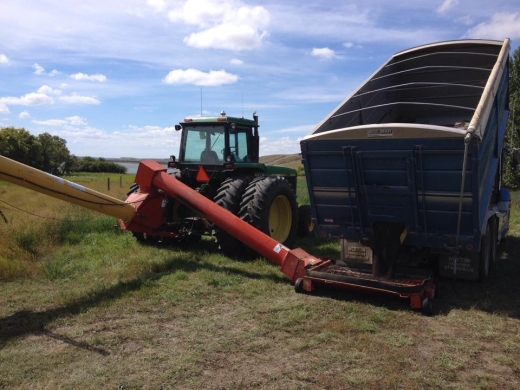There are many hazards and dangers on the farm, however, grain entrapment is becoming more common. Grain entrapment occurs when either the operator or grain falls, resulting in a victim pinned down underneath many yards of grain. Flowing grain, avalanches off of vertical grain walls, and collapsing of grain bridges are the most common causes of entrapment on the farm. By understanding the different behaviors grain and machines on the farm have, you are more likely to prevent accidents.
Despite the size and weight of a grain kernel, when they are in large groups they can become dense and pin you down. When a grain bin is being unloaded, the grain flows in a funnel shaped path towards the auger. The grain is almost like quicksand and will pull you down.
"In an ideal world, no one should ever into a situation where grain is moving," Glen Blahey, with the Canadian Agriculture Safety Association said. "If for some reason they have to go in, then they have to take many precautions."
Precautions include: body harnesses that are attached to a lanyard outside in order to pull someone out in an emergency, shutting off all equipment, and having help to either supervise or be able to call for help when needed.
Sometimes grain can become spoiled due to moisture and varied temperatures which results in grain sticking together and appearing solid. The product can eventually stand vertically against the bin wall. Despite being a solid, grain acts as a liquid, forming into any shape. Victims of avalanches often try to remove the crust by taking a shovel or stick and poking the wall. This can cause the grain to break free from the walls, burying who ever is in the enclosure.
"We as human beings have to remember that we are not invincible," Blahey said. "We are responsible for our own safety."
The number one safety rule for farmers and producers out there is to never enter the bin unless absolutely necessary. If at all possible, consider contracting out to someone who has the equipment, time, and skills to do it safely. Grain entrapment can be avoided as well as any other danger on the farm. The CASA says, "It's just a matter of communication and planning."










